Table of contents
Meet 10 teas to improve gastritis!
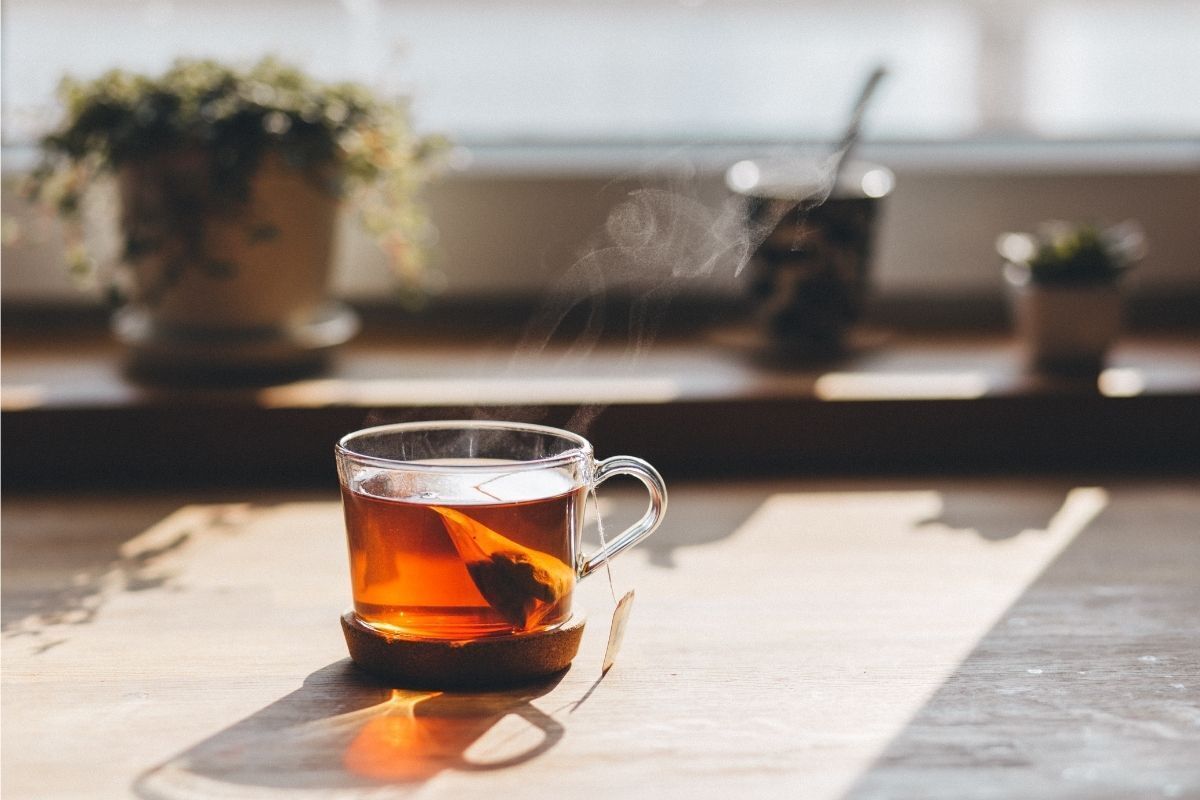
Those who suffer with the symptoms of gastritis seek alternatives to reduce the discomfort caused by this disorder. Opting for a diet more suitable to reduce inflammation is a wise decision, but adhering to some teas also helps in daily relief.
Scientific research shows that the tea can be a good ally in treating gastritis at home, being effective in fighting the H. Pylori bacteria, a common cause of gastritis.
According to these researches, some teas have compounds called polyphenols and flavonoids, which protect the stomach mucosa, since they block the action of the enzyme urease and prevent the evolution of inflammation. Let's see valuable information about teas for gastritis, to know in depth its benefits!
Understanding about the teas for gastritis
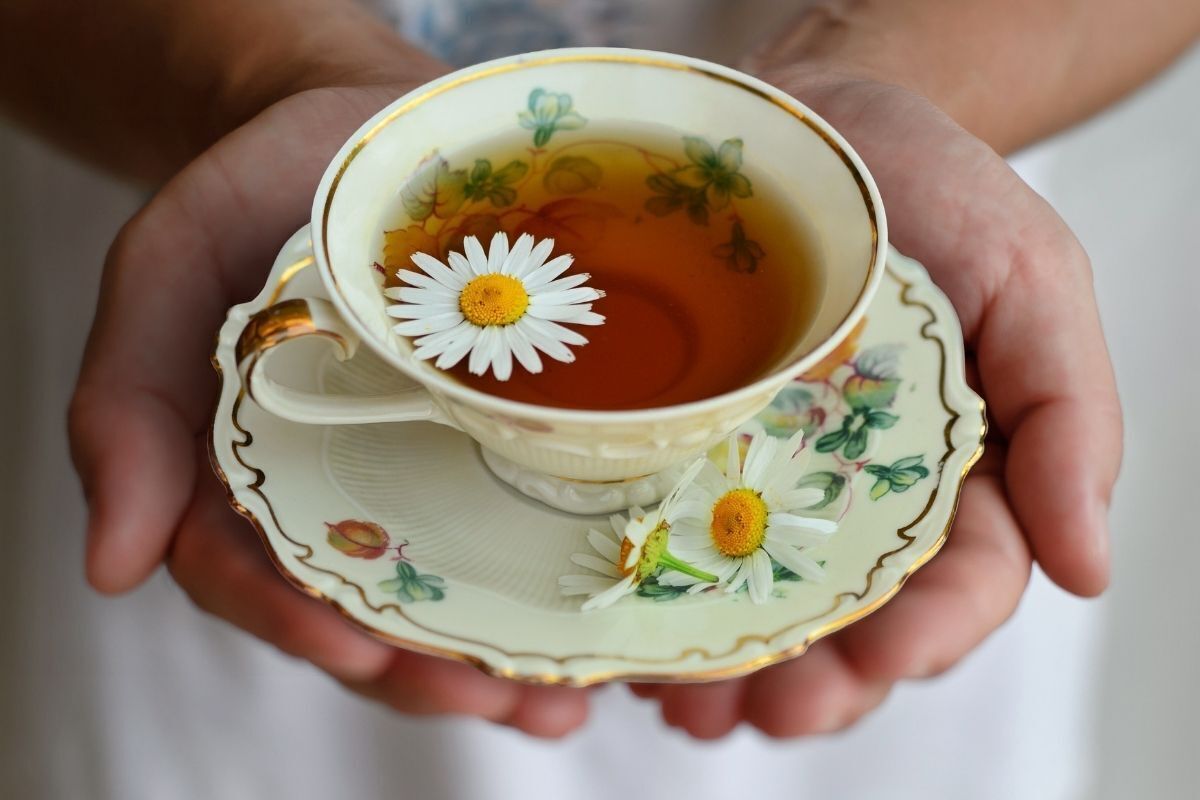
Those who suffer from gastritis or are looking for ways to avoid it will benefit from a more thorough knowledge about the teas for gastritis. Check it out!
What is gastritis?
Gastritis is a general term that describes inflammation of the stomach lining. With it, the mucosa becomes swollen and red, altering the production of stomach acid and mucus.
Thus, the mucosa becomes sensitive, and stomach acid can cause a range of damage. Symptoms of gastritis include pain in the upper abdomen, burning, nausea and vomiting. In addition, gastritis can develop into ulcers.
It can be acute, appearing suddenly, or chronic, when it evolves gradually due to lack of treatment. For this reason, it is important to consult a doctor to perform the necessary tests and start the appropriate treatment.
Possible causes of gastritis
There is no consensus about the H. pylori bacteria being a causative agent of gastritis. According to Dr. Dr. Dráuzio Varella, there is this probability, still being studied. By the way, it is common that many people have the H. pylori bacteria and do not present symptoms.
It is estimated that its relationship with gastritis is because the bacteria produce an enzyme called urease, which reduces the acidity of the stomach, weakening the mucosa and attacking the stomach lining, which is exposed to digestive fluids.
Other causes of gastritis include excessive non-steroidal anti-inflammatory drugs, alcohol or drug abuse, smoking, radiation treatments, and autoimmune diseases.
Dangers and care of gastritis
When gastritis is not sought treatment, there is a risk that it will become chronic and even develop into an ulcer or cause anemia. In addition, it is linked to cancerous tumors in the stomach lining.
If you suspect you have gastritis, or have already been diagnosed with this disorder, follow the prescribed medical treatment and stop harmful habits, such as smoking or excessive drinking.
Anti-inflammatory foods and teas for gastritis aid in reducing symptoms, but are not a substitute for medical care. Any treatment of gastritis at home should be done with a doctor's concurrence.
Benefits of tea for gastritis
Some teas are especially effective in combating or alleviating the symptoms of gastritis. They work, of course, in a complementary way to medical treatments, and also as a preventive therapy.
Green tea, for example, has anti-inflammatory action, as it contains antioxidant assets that contribute to inhibit the development of chronic gastritis, even so as to stop the progression of stomach cancer.
Other teas, such as Espinheira-Santa and Aroeira, have active ingredients that reduce acidity, protecting the stomach, with similar effect to known medications such as cimetidine and omeprazole.
Espinheira-Santa tea
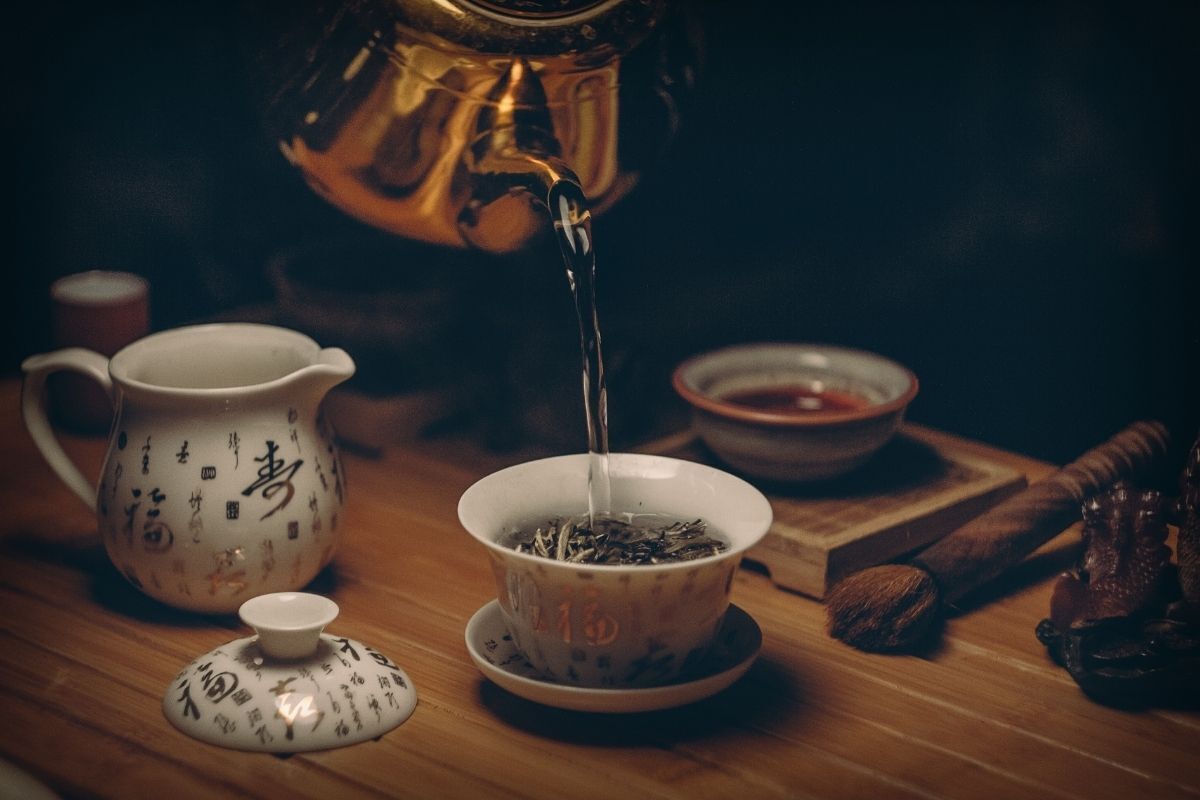
Let's know the benefits of Espinheira-Santa tea for gastritis. This tea has properties that produce protective effects to the stomach. Check it out!
Indications and properties of Espinheira-Santa
Maytenus ilicifolia tea, the herb popularly known as Espinheira-Santa, is an excellent home remedy for gastritis. This tea contains polyphenols, natural compounds present in vegetables. They are great for health because of the presence of epigallocatechin, an antioxidant that ensures the protection of cells against free radicals.
Espinheira-Santa also has arabinogalactan, a fiber that promotes immunity. These assets reduce stomach acidity and protect the stomach from its acids.
Ingredients
The ingredients for making Espinheira-Santa tea are simple and easy to find. You will need about 3 tablespoons of dried leaves of this herb. Espinheira-Santa is sold dried, 100% natural and is found in natural products stores and also in supermarkets.
In addition, you will need 500 ml of boiling water. If you want to sweeten the tea, it is best to opt for honey, in small quantities.
How to make the Espinheira-Santa tea
The preparation of Espinheira-Santa tea is simple and quick. Heat 500 ml of water in a kettle or milk jug and wait for it to boil. When the water boils, just turn off the heat.
Put the 3 tablespoons of Espinheira-Santa leaves in the container. You must cover it and leave the herb to infuse for at least 5 minutes. After that time, strain the tea and sweeten it if you prefer.
Cautions and contraindications
Espinheira-Santa is a plant that brings several benefits, but some people should avoid its consumption, such as children under 12 years old. Pregnant women should not consume this tea during pregnancy, because it contains assets that can induce uterine contractions and, in more serious cases, even cause abortion.
Lactating women should also not take the Espinheira-Santa tea, as it can reduce the production of breast milk.
Aroeira Tea
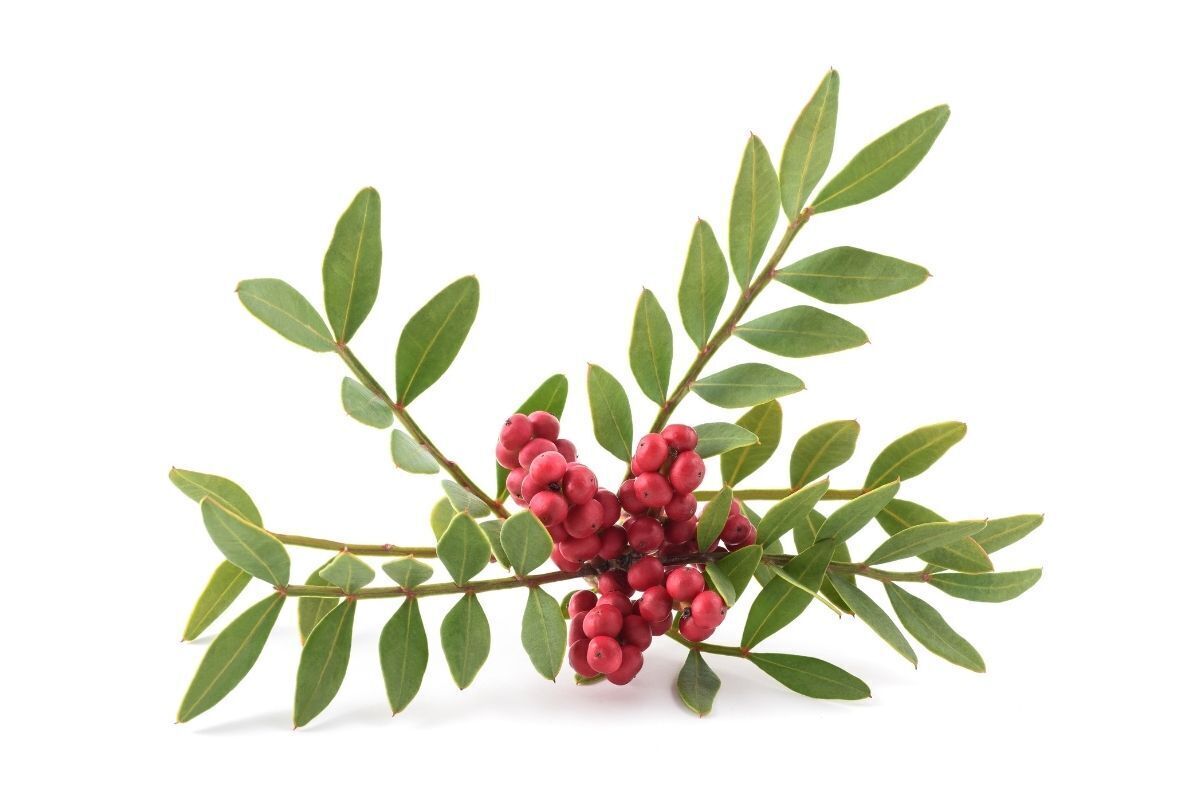
Aroeira delivers analgesic effect, in addition to anti-inflammatory and antacid action, which makes it effective against gastritis. Check out valuable information about Aroeira Tea below!
Indications and properties of Aroeira
Aroeira is a plant used for various medicinal purposes. It is divided into several species and in Brazil the most popular are Schinus molle and Schinus Terebinthifolia.
Aroeira contains tannins, i.e. polyphenols that are antioxidants, as well as flavonoids that offer protection to the cardiovascular system and help improve blood circulation. In addition, it has saponin, a substance with anti-inflammatory action.
Aroeira is also considered a natural antacid, and its tea is widely used to relieve gastritis.
Ingredients
Let's learn about the ingredients needed to make Aroeira tea. We have chosen an Aroeira tea that uses both the leaves and the bark of this plant.
You will need 100 g of mastic tree leaves, 4 pieces of mastic tree bark and 1 liter of water. This plant can be bought at natural products stores.
How to make Aroeira tea
In a container such as a kettle, teapot or milk jug, heat 1 liter of water and wait for it to boil. When the water is boiling, place the leaves and bark and leave on the fire for about 5 minutes.
Then, wait for it to cool down a little to consume the tea. If you choose to sweeten it, prefer honey, using only 1 tablespoon. This tea is also an excellent option to be drunk iced.
Cautions and contraindications
Some people have sensitivity to Aroeira and should not consume it. The consumption of Aroeira tea is beneficial to assist in the treatment of various disorders, including gastric disorders, but in this case, one should not abuse it.
The use of the plant by those who have gastrointestinal problems such as diarrhea should be moderate, since it delivers laxative effect and can trigger allergic reactions in the mucous membranes. Pregnant women should also avoid Aroeira.
Acelga Tea
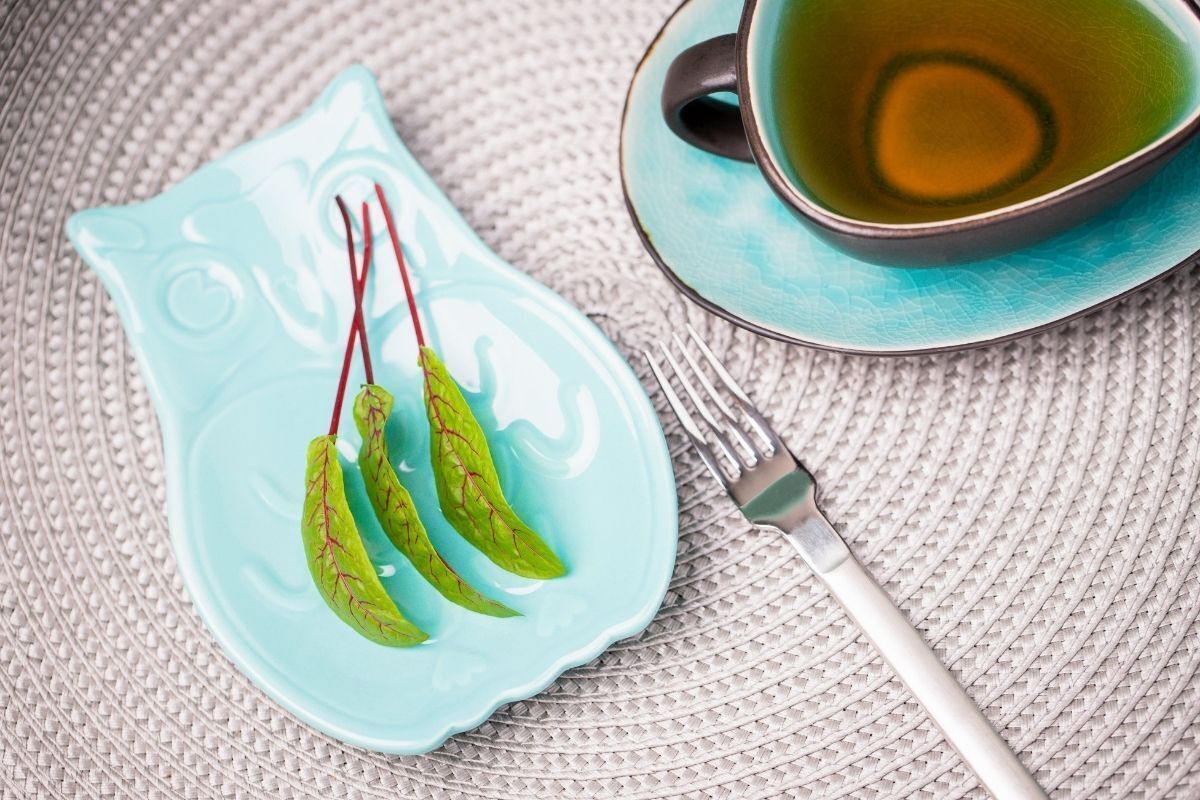
Let's know the benefits of the chard tea, an excellent option of home remedy that helps against the symptoms of gastritis. Follow and learn how to make it!
Indications and properties of chard
The chard is one of the most nutrient-rich vegetables, which makes it a vegetable option that can not be missing in your daily life. A good way to benefit from the antioxidant and anti-inflammatory properties of chard is to drink its tea. It is an effective home remedy against gastritis symptoms.
Because it contains iron, folic acid and Vitamin C, A and K, chard helps strengthen the immune system. The fibers present in it facilitate intestinal transit and protect the digestive system.
Ingredients
To prepare the Acelga tea, you will need only two ingredients: 1 liter of boiling water and about 50 g of the leaves of this vegetable.
In order to prepare a good tea, ensuring the nutrients of chard, it is ideal to choose leaves that have a light green color. The lightest leaves are the freshest, so avoid those with a yellowish appearance, with dark or wilted spots.
How to make Acelga tea
The preparation of chard tea is simple and quick. Put the water to boil in a kettle or milk kettle and cut the chard leaves (about 50 g). When the water is boiling, add the leaves and wait for about 10 minutes.
After that time, turn off the heat and wait until the drink is lukewarm. The Acelga tea can be taken 3 times a day.
Cautions and contraindications
The chard is a vegetable rich in nutrients and, therefore, is a great natural ally for health. However, its consumption should be avoided by some people. It contains a high content of oxalate, a substance that reduces the body's ability to absorb calcium.
In addition, the consumption of chard can be harmful to those who have kidney stones, because the presence of oxalic acid stimulates this type of formation. The ideal consumption of chard is cooked, since in this way the acid is reduced.
Mint Tea
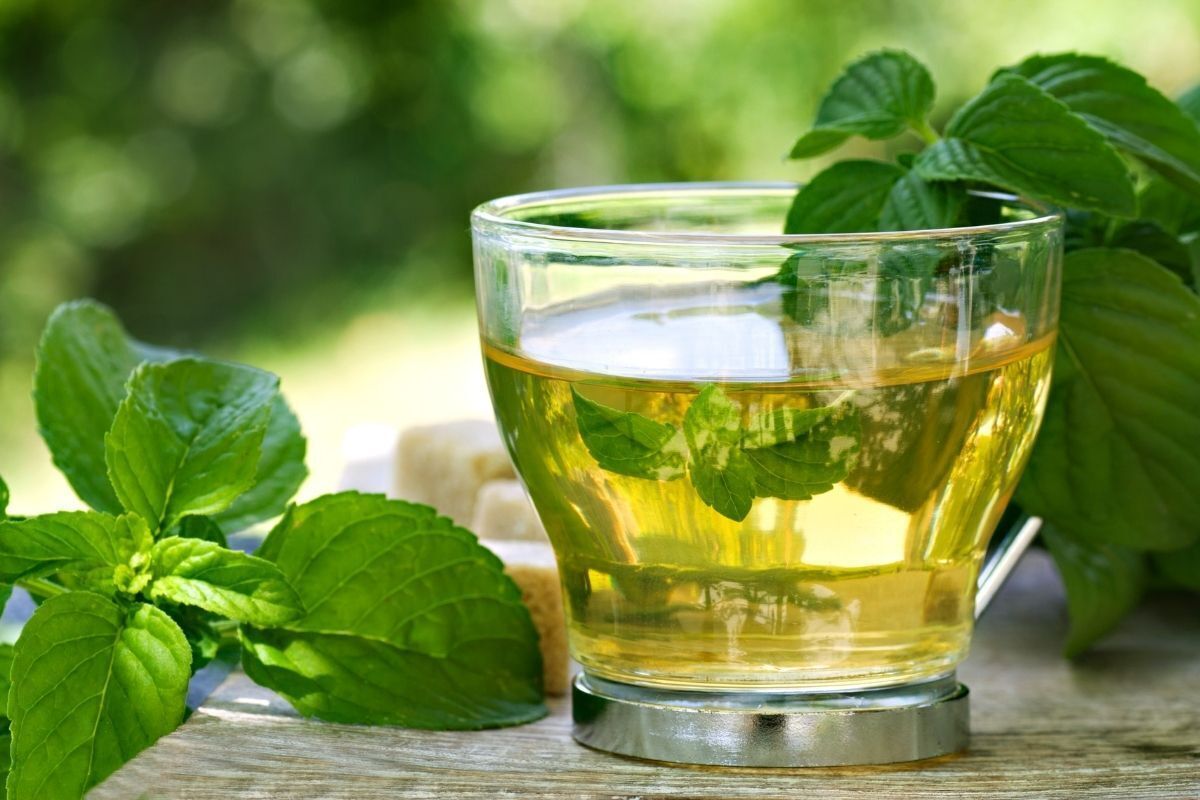
Mint tea is a healthy and tasty option, ideal for frequent consumption for those who suffer from gastritis symptoms. Know its benefits and learn how to make this tea below!
Indications and properties of mint
In addition to its digestive properties, Mint has analgesic, antioxidant, anti-inflammatory, antispasmodic and antiparasitic properties. For these reasons, it makes an excellent tea to relieve symptoms for those suffering from gastritis, as well as to prevent and fight parasitic infections.
Amoebiasis and giardiasis are two parasitic infections that drinking Mint tea helps fight. For gastric and intestinal symptoms, it is an especially effective tea in reducing nausea, abdominal bloating, gas and diarrhea.
Ingredients
The Mint tea option featured is ideal for improving digestion. The combination of herbs in this tea provides a reduction in stomach acidity. The ingredients are simple and easy to find.
You will need about 2 teaspoons of dried or in natura mint leaves, 2 teaspoons of fennel seeds (you can substitute with fennel if you prefer), 2 teaspoons of lemon balm leaves and 1 liter of water.
How to make Mint tea
To start your tea, put 1 liter of water in a pot, kettle or milk kettle and wait until it boils. When the water is boiling, add all the ingredients and wait for about 5 minutes.
This is a tea that can be drunk cold, in small quantities throughout the day. Take 1 cup of it, 3 to 4 times a day, preferably between meals. If you want to sweeten it, opt for 1 teaspoon of honey.
Cautions and contraindications
Mint is an herb full of health benefits, but its consumption should be avoided by some people.
Mint tea is contraindicated for pregnant and lactating women, as well as for people suffering from obstructed bile ducts and children under two years old. Those who have anemia should also avoid this vegetable. Mint, when consumed in excess, can cause contractions in the uterus, as well as shortness of breath, due to the presence of menthol.
Lemongrass tea
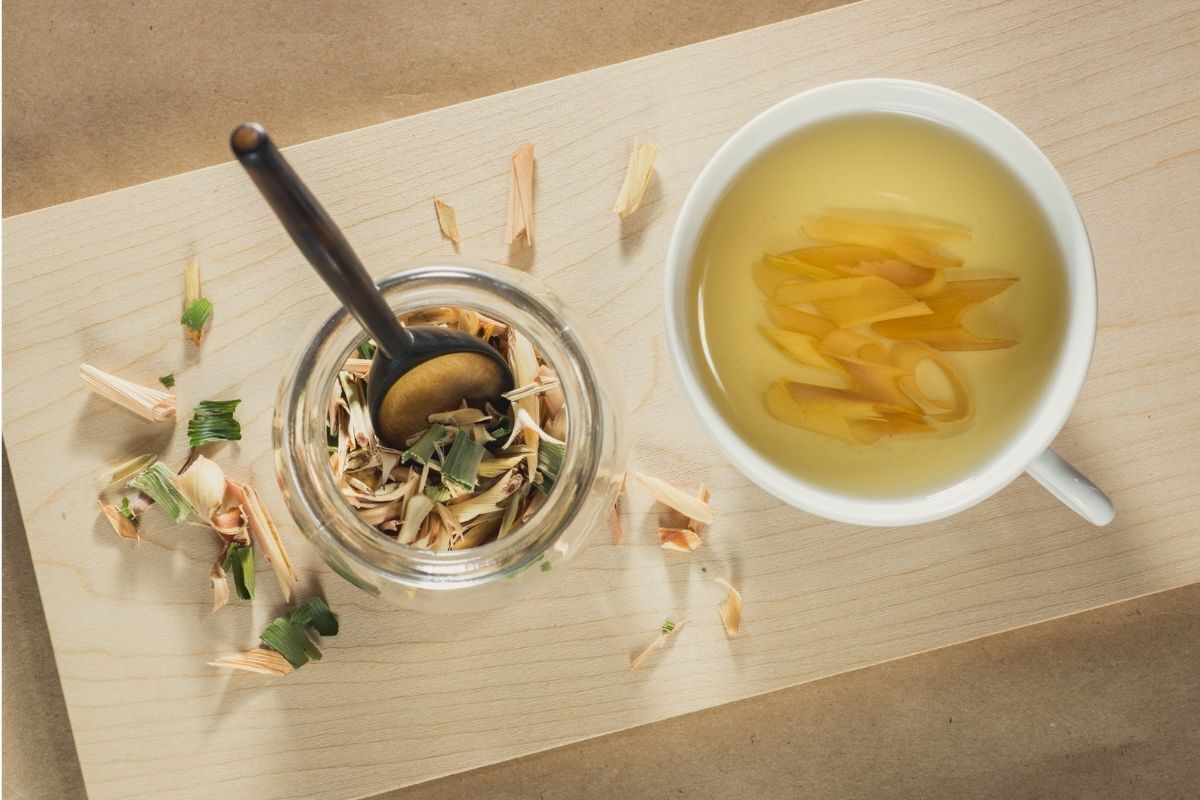
Learn the properties and indications for Lemongrass tea, an allied drink against the effects of gastritis. Learn how to prepare this tea and other valuable information about its consumption below!
Indications and properties of Lemongrass
Lemongrass is a herb also known as Capim-santo, Capim-cheiroso and Capim-cidreira, depending on the region. It is a plant very rich in substances that fight free radicals, such as limonene, geraniol and citral.
The analgesic properties of lemongrass are due to the presence of another bioactive, myrcene, which reduces pain even in stomach cramps. Flavonoids and tannins help reduce stomach acidity and, as a bactericide, lemongrass is also effective in combating H. pylori.
Ingredients
Lemongrass tea can be made with the herb in dried leaves or in natura, that is, fresh. You will need 4 to 6 lemongrass leaves for each cup of water, if you choose the herb in natura.
If you purchase this plant in its dried form, reserve 2 teaspoons for each cup. Dried Lemongrass can be found in stores specializing in natural products.
How to make Lemongrass tea
Lemongrass tea is an excellent choice of iced tea, but as a hot beverage it is also pleasant and delivers positive effects. The preparation of this tea is an infusion in boiling water.
So, bring to a boil the amount of water you want. After boiling, add the chopped leaves (if in natura) or teaspoons of the dried herb. Cover the container and wait until cool enough to drink.
Cautions and contraindications
There are no major contraindications in relation to the consumption of lemongrass. However, its consumption in excess, as well as that of other beneficial plants, should be avoided. This is because overloading the body with its properties can result in sleepiness, dizziness, weakness and low blood pressure.
People who suffer from blood pressure should not consume Lemongrass. Excess of this herb can even cause fainting. In addition, Lemongrass tea is contraindicated for pregnant and lactating women.
Ginger Tea
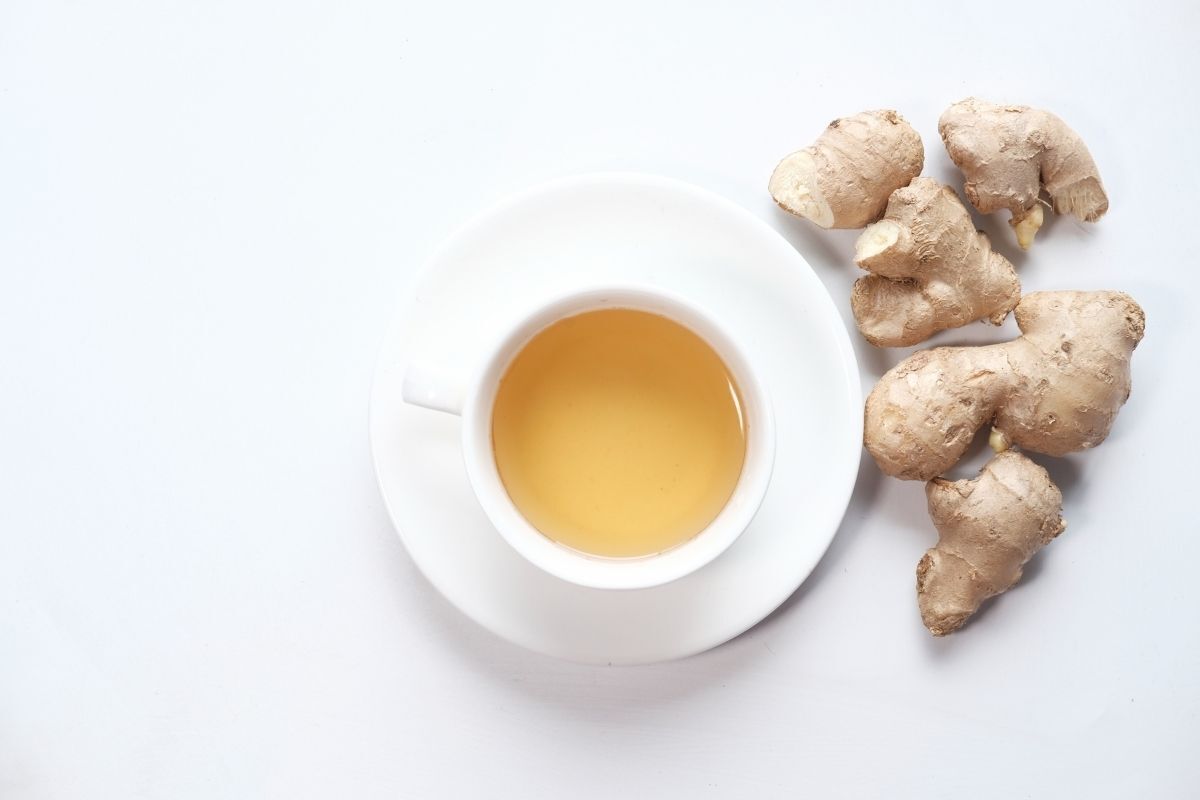
Come to know what are the positive effects of Ginger Tea for the body, especially for the digestive system. It is an important additional in the home treatment of gastritis. Learn how to prepare this tea and know all about it below!
Indications and properties of ginger
Gingerol, paradol and zingerone are some of the bioactive components present in Ginger, this herbaceous plant very popular as a spice and rich in nutrients. Its anti-inflammatory and antioxidant action makes it an excellent choice of tea to combat the symptoms of gastritis.
The beneficial effects of Ginger on the digestive system promote the reduction of bloating, gas and stomach cramps. Ginger tea also has antiemetic action, that is, it relieves symptoms such as nausea and vomiting.
Ingredients
Ginger tea is a great tea for gastritis. Here, we will know a recipe for Ginger tea with pineapple peel, rich in anti-inflammatory properties. You will need the peel of a pineapple, 1 liter of filtered water and 2 to 3 slices of fresh ginger, in the thickness of your preference.
The tea can be sweetened with honey. In addition, of course, you can also choose to boil only the Ginger and have a pure Ginger tea.
How to make Ginger tea
To start your tea, put 1 liter of water to boil, preferably in a pot or milk jug. When it is boiling, add the ginger and pineapple peel.
If desired, other ingredients can enhance this recipe, such as some mint leaves, for example. Keep the pot covered and let the contents boil for 5 minutes. Once ready, it can be sweetened with honey. This is a great tea to be drunk hot or iced.
Cautions and contraindications
Despite being an herbaceous full of beneficial properties for the body, some people should avoid consuming Ginger. It is contraindicated for children under six years.
In addition, it may not be good for those with gallstones and high blood pressure. People who suffer from stomach irritation should also avoid it. When in excess, Ginger may increase the risk of bleeding in those who suffer from blood clotting or circulation problems.
Chamomile Tea
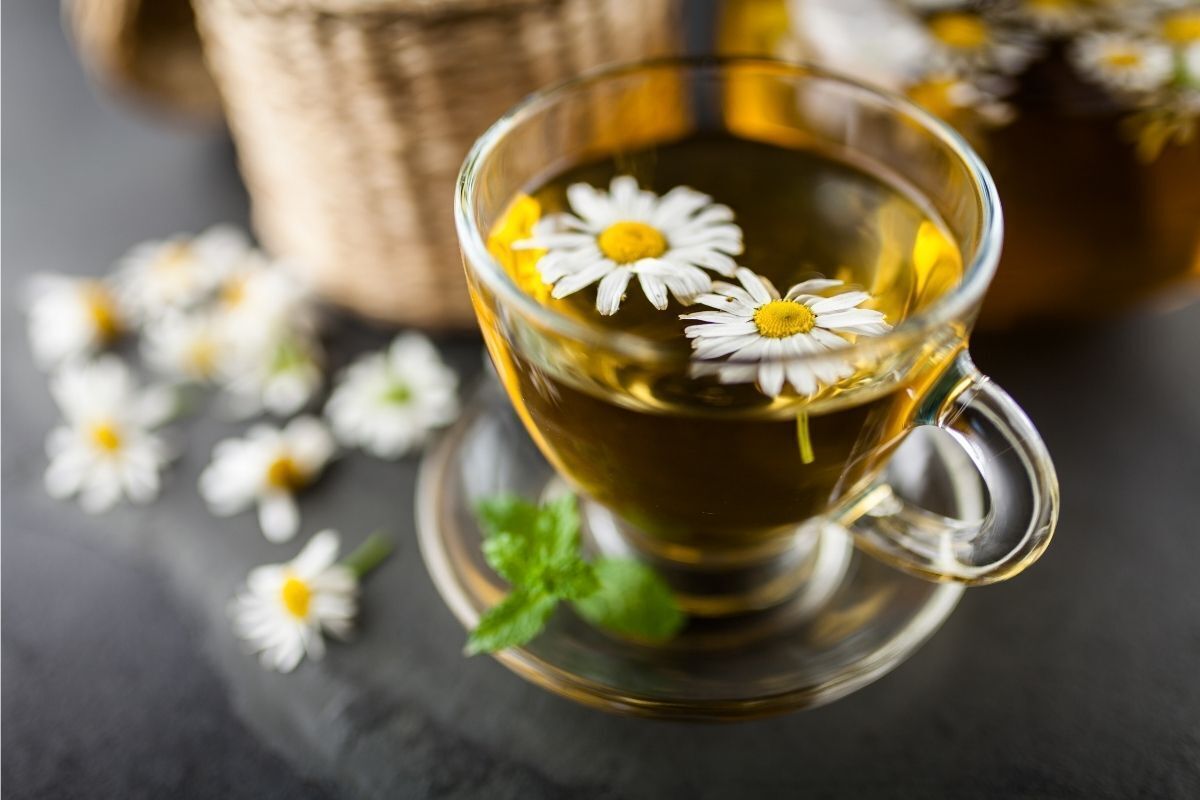
Let's learn all about the popular and delicious Chamomile tea, an ideal tea option for those who suffer from gastritis symptoms. Check it out!
Indications and properties of Chamomile
The properties of Chamomile make it a special ally in the routine of those who have gastritis. Besides being a plant with anti-inflammatory, calming and antispasmodic action, ideal for gastrointestinal relief, Chamomile tea helps to control the production of stomach acids.
Its positive effects for the digestive system include reducing symptoms such as nausea and gas, so drinking Chamomile tea regularly is also a good way to guard against gastric problems such as ulcers.
Ingredients
The best way to make Chamomile tea is to infuse it with the dehydrated flowers of this plant. It is a product that can be easily found in supermarkets, organic markets or stores specializing in natural products.
To make the tea, separate about 4 g of dehydrated Chamomile flowers. This quantity is ideal to make a liter of tea. Remember to use filtered water and, if you want to sweeten it, use honey.
How to make Chamomile tea
To make Chamomile tea, put 1 liter of filtered water to boil in a container such as a kettle or milk jug. When the water is boiling, add the dehydrated Chamomile flowers in the indicated quantity.
It is necessary to cover the container and let it stand for about 10 minutes. After that time, simply strain it, and the tea will be ready to drink. It can be consumed throughout the day (up to 4 cups daily).
Cautions and contraindications
Chamomile is not a plant capable of causing many side effects, but care should be taken not to consume it in excess. When consumed in large quantities, Chamomile tea can cause nausea and even diarrhea and vomiting.
In addition, one of the side effects may be excessive drowsiness. People allergic to plants of the daisy family cannot consume this tea, and it should be avoided by nursing mothers.
Guaçatonga Tea
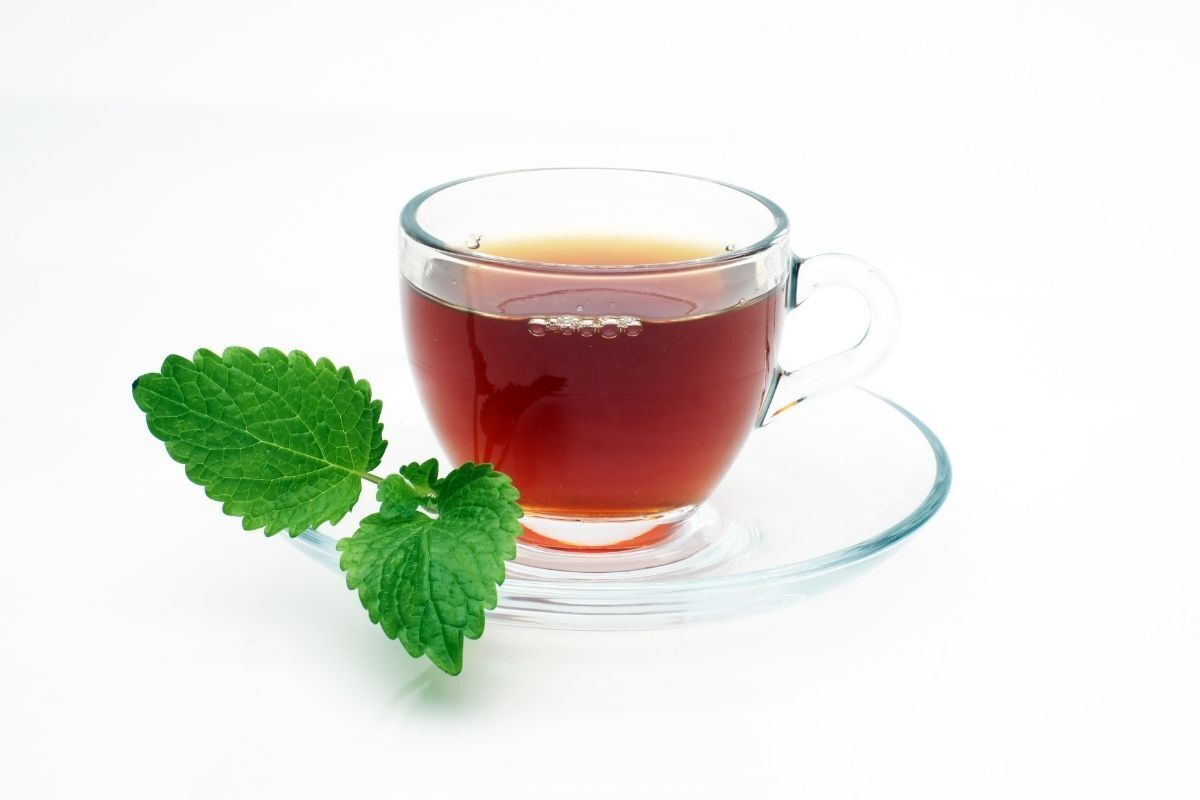
If you don't know Guaçatonga tea, follow the indications and properties of this powerful plant. It helps fight the symptoms of gastritis, and its tea is indicated to treat and prevent stomach ulcers. Check out the recipe and more!
Indications and properties of Guaçatonga
Guaçatonga, also known as Bugre's Weed, is a plant highly valued for its medicinal properties. Widely used in homeopathy, it offers a range of beneficial actions to the body, and among them, its positive effects for those suffering from gastritis and ulcers stand out.
Its properties range from anti-inflammatory, antispasmodic and calming to immunostimulant and anti-ulcer action. Guaçatonga Tea is an additional option for the treatment of gastric problems.
Ingredients
Let's learn the ingredients for making Guaçatonga tea. This is not a widely known herb, and some people may not know where to find it. However, it can be purchased at health food stores and even some supermarkets.
To prepare this powerful tea, you will need only the following ingredients: about two tablespoons of dehydrated Guaçatonga leaves and 1 liter of filtered water.
How to make Guaçatonga tea
To make Guaçatonga tea, put 1 liter of filtered water to boil in a container such as a kettle or milk jug. When the water is boiling, add the two tablespoons of dehydrated Guaçatonga leaves.
It is necessary to cover the container and let it steep for about 10 minutes. After this time, simply strain it and it will be ready to drink. This tea can be taken twice a day.
Cautions and contraindications
Studies surrounding Guaçatonga report that this plant does not cause significant side effects and consider its consumption safe.
However, one must be careful with any kind of excess, and taking Guaçatonga tea in large quantities can cause irritation, nausea and vomiting, especially in those who already have stomach problems. Remembering that, if taken properly, it is an excellent natural remedy against disorders of the gastric system.
Lemongrass Tea
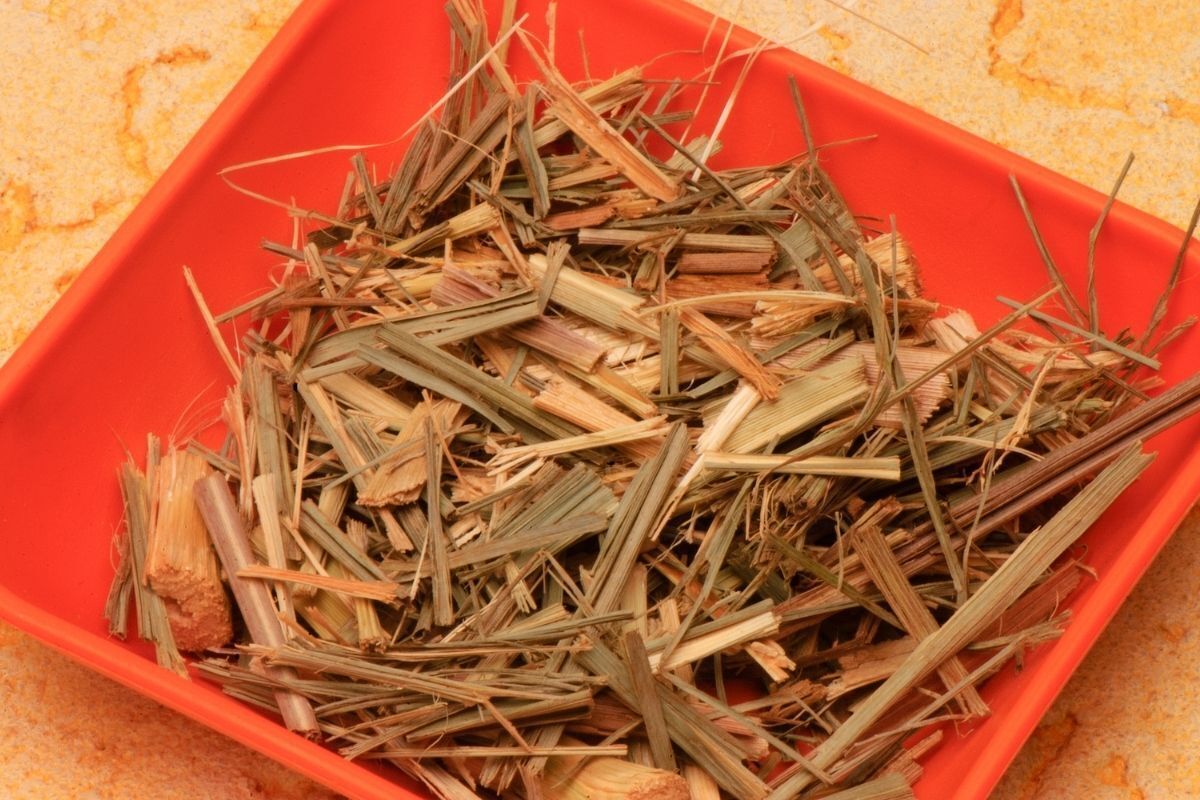
Let's learn all the benefits of lemon balm tea, very effective against gastritis. Learn how to make the tea and learn about its properties, indications and more!
Indications and properties of lemon balm
Melissa officinalis is the scientific name of the plant known as Melissa, a popular herb consumed especially in teas. This plant is rich in flavonoids and phenolic compounds.
Thus, its anti-inflammatory and antispasmodic effects, as well as analgesic and antioxidant effects, are of great benefit to those suffering from poor digestion, gastritis, or other gastrointestinal problems. Regularly drinking Lemon Balm tea is not a substitute for other care or treatment, but it powerfully aids in relieving symptoms.
Ingredients
The best lemon balm tea is the one made only with its leaves, because it is in them that the most valuable nutrients and the most beneficial properties for health are contained.
The lemon balm for this tea can be in natura, that is, fresh, or the commercialized dehydrated version. Thus, you will need 2 to 3 tablespoons of these leaves to make 1 liter of tea with filtered water.
How to make lemon balm tea
The preparation of lemon balm tea is the infusion. Therefore, put in a container such as a kettle or milk container 1 liter of water and bring to a boil. Wait for the water to boil and then add the tablespoons of lemon balm leaves.
It is necessary to cover the container to stifle the contents. Wait for the mixture to stand for a few minutes and let it cool. If you choose to sweeten the tea, prefer honey to sugar.
Cautions and contraindications
There are not many side effects of lemon balm, but its use should not be excessive. The recommendation of doctors is that daily consumption should not exceed 4 months.
Constant and abusive consumption, that is, in large daily quantities, can cause effects such as nausea and vomiting, besides abdominal pain and even pressure drop, dizziness and tachycardia.
Also, this is an herb that causes drowsiness and should be avoided by those using sedatives or thyroid medications.
Fennel Tea
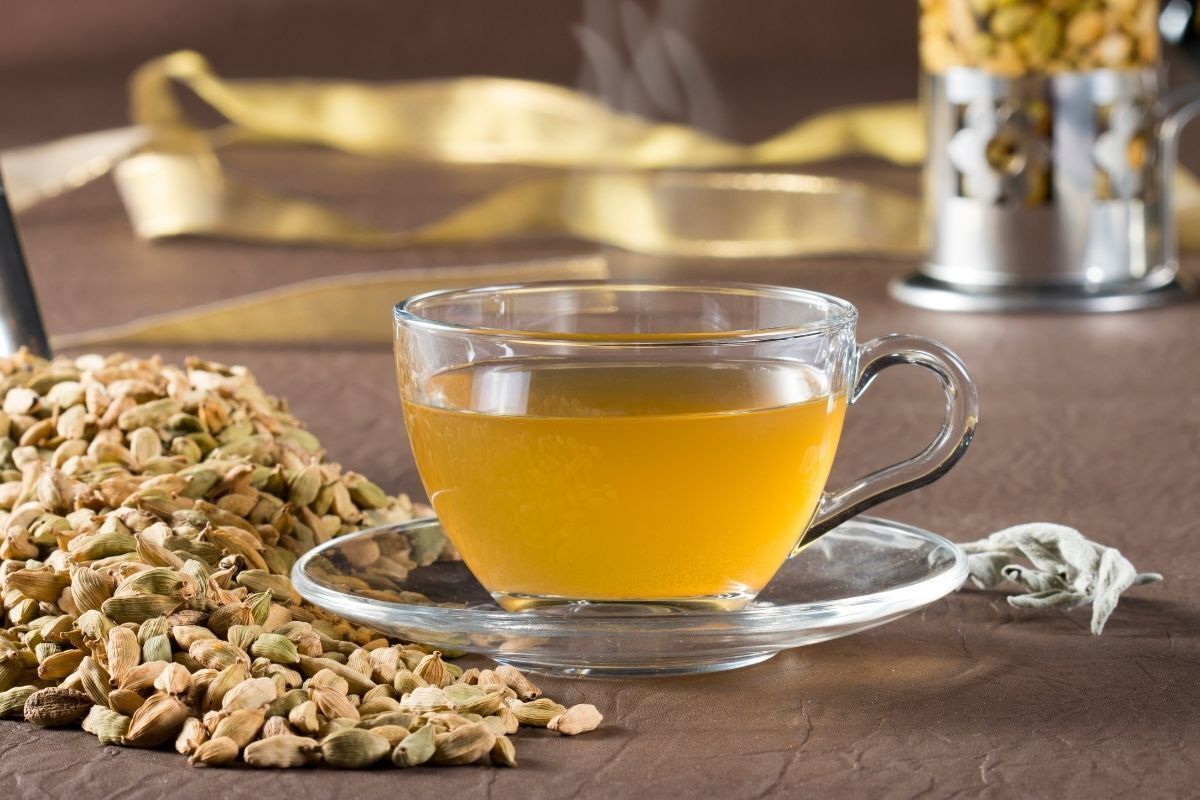
Next, we will learn about the indications, properties, care and contraindications of fennel. In addition, you will learn how to make fennel tea, a great home option for the relief of gastritis. Follow!
Indications and properties of Fennel
Fennel is a highly beneficial plant for the body, as it contains important bioactives for medicinal and nutritional use. The presence of flavonoids, tannins, alkaloids and saponins, as well as essential fatty acids and rosmarinic acid, makes this plant an excellent phytotherapeutic option.
Fennel's properties have benefits for those suffering from gastrointestinal symptoms such as gastritis, gas, poor digestion, reflux, stomach pain, cramps, and diarrhea.
Ingredients
Fennel tea can be made using the seeds of this plant, or its fresh leaves. If you cannot find Fennel in natura, you can opt for the dehydrated version, sold in some supermarkets, open fairs or stores specialized in natural products, such as herbalists.
3 tablespoons of Fennel seeds or leaves will suffice. For this amount of herbs, 1 liter of water is recommended to make the infusion.
How to make Fennel tea
The preparation of Fennel tea is simple. Place in a container, such as a kettle or milk container, the amount of water indicated and bring to a boil. Wait for the water to boil and then add the tablespoons of Fennel seeds or leaves.
You can add a little bit of each. You need to cover the container to muffle the contents. Allow the mixture to sit for 5 minutes and wait for it to cool.
Cautions and contraindications
The consumption of Fennel is not indicated during pregnancy. Drinking Fennel tea during this period can cause increased contractions, exposing the pregnant woman to the risk of miscarriage.
Lactating women should also avoid this tea. In addition, there are people who may be allergic to Fennel and observe the appearance of skin reactions. Doctors do not recommend the use of Fennel by people with a history of epilepsy or seizures.
Enjoy the benefits of the best teas for gastritis!

There are several plants that contain beneficial properties for the complementary treatment of problems related to digestion. A simple and economical way to get good results against the unpleasant effects of problems such as gastritis is to adhere to the teas.
First of all, you need to know the ways to consume them, and something important is not to overdo it. The excess of bioactive substances can overload the body and bring side effects.
Many teas have anti-inflammatory, analgesic and even control the production of acids that are harmful to the stomach. Drinking a good tea is a guarantee of relief and prevention of gastric problems.

